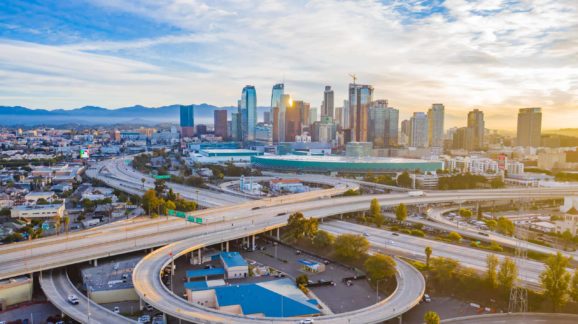Railway Unions Want Minimum Crew Numbers

Photo Credit: Getty
Cars are learning to drive themselves on U.S. highways. Unmanned aerial drones are fueling the expansion of e-commerce. Railways have been trying to automate as well, but they are likely to find the Biden administration and Congress standing the way.
If any form of transportation should be on the leading edge of automation, it should be railways. Trains don’t utilize public roads or the skies and therefore have an in-built safety advantage. Many of their systems have been automated for decades. Railways have long used a technology dubbed “deadman’s switches” that stops the train if the engineer becomes incapacitated or even dies.
Democratic lawmakers and the Sheet Metal, Air, Rail and Transportation Workers (SMART) union have repeatedly pushed for mandates to require trains to have a minimum of two workers at all times for safety reasons. The mandate would help the 202,000-member SMART, which has lost almost 5,000 members in the last five years, staunch those losses. But it also would effectively end the industry’s ability to move toward full automation.
President Biden has promised the unions that he will make the rule a reality, though it has yet to begin the process. SMART’s endorsement of Biden was based mainly on his “strong support of the concerns most important to our members, including the need for two-person railroad crews.” The Obama administration had attempted to implement a two-crew minimum as an official rule in 2016, but the Trump administration dropped it three years later.
The previous administration dropped the effort mainly because the rail industry has been steadily automating for decades, without increasing the rate of accidents. Until 1992, rail lines utilized three or more crew members. That year, there were about three accidents per 10 million miles of railways traveled, according to data by the American Association of Railroads. In the two decades since then, the standard crew size has shrunk down to just one and the rate of accidents has fallen in tandem to 1 accident per million miles.
The question of whether having one employee would make railways more dangerous has already been addressed twice by the Department of Transportation (DOT), once in 2016 and again three years later. The first time was when DOT’s Federal Railroad Administration (FRA), then under the Obama administration, proposed the rule requiring at least two employees.
The administration openly conceded at the time there was no evidence that the rule was actually needed, stating, “FRA cannot provide reliable or conclusive statistical data to suggest whether one-person crew operations are generally safer or less safe than multiple-person crew operations.” The Obama administration nevertheless argued that one-person crews would still “pose an unacceptable level of risk as compared to operations utilizing a two-person crew.”
DOT withdrew that proposed rulemaking in 2019 during the Trump administration. Following an extensive review of the data relating to train safety, the department said that the FRA’s statement in the original rulemaking that there was no “reliable or conclusive statistical data” that one-person crews were less safe “still holds true today.”
That has not deterred advocates of two-crew minimums. Earlier this month, House Transportation Committee Chairman Pete DeFazio of Oregon and Donald Payne of New Jersey, head of the subcommittee that oversees railroads, asked the Government Accounting Office to investigate cost-cutting efforts in the railroad industry. They said that “stakeholders” were concerned that “dramatic workforce cuts” had created “safety concerns.”
The smart money is on the Government Accountability Office reporting the same thing that the Department of Transportation did and the Biden administration pushing for the two-person rule anyway.